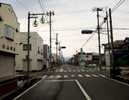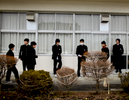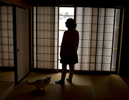Life within 90km
Nearly three years after 3/11/11 -- the great Tohoku earthquake that struck the northeastern coast of Fukushima, Japan -- thousands of families, farmers, business owners, teachers and students across all of Fukushima have been feeling the impact. It has caused a an ongoing nuclear nightmare for thousands of residents not only living within the 12-15 mile radius of the Daiichi nuclear power plant, "the Exclusion Zone," but throughout Fukushima. There are roughly 160,000 people displaced from neighboring cities stretching nearly 90 kilometers away from the power plant, many of whom have been living in temporary housing for up to three years now, as cleanup crews continue to decontaminate radiation.
As restrictions have been lifted in some areas of Fukushima, just outside of the no-go zone, many older residents that are deeply connected to their land will return. However, younger families with children are not so eager to return home due to the lack of information provided by the government. Some of the hardest things for people to deal with is the fact that no one has taken responsibility three years later and not trusting what the government is saying, especially after hot spots of radiation have been reported several levels higher than normal in populated areas that was considered to be safe.






















